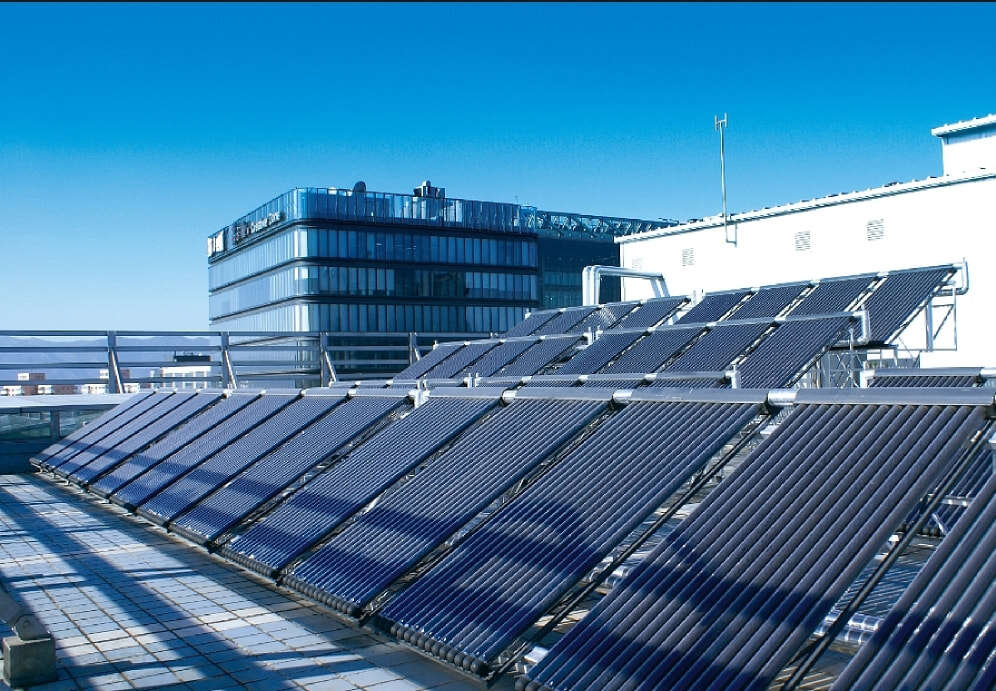The Strategic Importance of Battery High Voltage Systems in Modern Grids
Battery high voltage systems have emerged as a cornerstone technology for enabling the large-scale integration of renewable energy into power grids worldwide. These advanced energy storage solutions operate at transmission-level voltages, typically ranging from 10kV to 150kV, allowing direct connection to high-voltage substations without requiring additional transformation equipment. The unique characteristics of battery high voltage systems make them particularly suited for addressing the challenges of modern grid operations, where flexibility, rapid response, and voltage support have become critical requirements. As grids evolve to accommodate higher penetrations of variable renewable generation, battery high voltage systems provide the essential grid-forming capabilities and inertia replacement that traditional generation sources previously supplied. Their ability to respond within milliseconds to grid disturbances makes them invaluable assets for maintaining system stability in an era of energy transition.
Enhancing Grid Stability Through Advanced Voltage Management
Dynamic Voltage Regulation and Reactive Power Support
Battery high voltage systems excel at providing instantaneous voltage regulation across transmission networks, responding to fluctuations caused by renewable generation variability or sudden load changes. These systems can independently control real and reactive power output, allowing them to support voltage levels without compromising their primary energy storage function. The fast switching capabilities of battery high voltage systems enable them to provide continuous voltage correction, unlike conventional mechanical solutions that suffer from slow response times. When deployed at strategic grid locations, these systems can mitigate voltage collapse risks during contingency events by injecting precisely controlled reactive power. The modular nature of battery high voltage systems allows utilities to scale their voltage support capacity as grid needs evolve, providing a future-proof solution for maintaining power quality. Advanced control algorithms enable these systems to predict voltage trends and preemptively adjust their output, preventing voltage deviations before they impact grid operations.
Inertia Emulation and Frequency Response Capabilities
The grid-forming capabilities of battery high voltage systems represent a breakthrough in maintaining grid stability as synchronous generators retire. These systems can emulate the inertial response traditionally provided by rotating machinery, instantaneously detecting frequency deviations and responding with precisely calibrated power injections. Battery high voltage systems achieve this through sophisticated control algorithms that mimic the physical properties of spinning masses while offering superior response speed and accuracy. Their ability to provide both synthetic inertia and primary frequency response makes them indispensable for grids with high renewable penetration. The instantaneous power delivery capability allows battery high voltage systems to arrest frequency declines within cycles, preventing cascading outages during generation trips. When configured as virtual power plants, aggregated battery high voltage systems can provide grid-scale inertia services comparable to conventional power plants but with far greater precision and flexibility. This capability becomes increasingly valuable as more non-synchronous generation connects to transmission networks.

Optimizing Grid Operations Through Intelligent Energy Management
Renewable Energy Time-Shifting at Transmission Scale
Battery high voltage systems enable unprecedented control over renewable energy dispatch by storing excess generation and releasing it during peak demand periods. Their high-efficiency power conversion systems minimize energy losses during this time-shifting process, maximizing the utilization of clean energy resources. The large capacity of these systems allows them to smooth out multi-hour renewable generation fluctuations that would otherwise require fossil fuel backup. Battery high voltage systems can be strategically located near renewable energy hubs to reduce transmission congestion and optimize power flows across the grid. Their ability to rapidly switch between charging and discharging modes makes them ideal for balancing the intermittent output of large-scale wind and solar farms. Advanced forecasting algorithms enable these systems to anticipate renewable generation patterns and optimize their operation schedules accordingly. This capability significantly reduces renewable curtailment while maintaining grid reliability during periods of variable generation.
Congestion Relief and Transmission Deferral Benefits
The strategic placement of battery high voltage systems at grid congestion points provides utilities with a powerful tool for managing constrained transmission assets. These systems can store energy during off-peak periods when lines are underutilized and discharge during peak congestion, effectively increasing the capacity of existing infrastructure. This application allows utilities to defer costly transmission upgrades while maintaining reliable service during high-demand periods. Battery high voltage systems can be deployed much faster than traditional transmission projects, providing immediate relief for constrained networks. Their bidirectional power flow capability enables innovative congestion management strategies that adapt to changing grid conditions in real-time. When integrated with grid optimization software, these systems can autonomously respond to locational marginal price signals, creating economic incentives for relieving congestion. The modular scalability of battery high voltage systems allows utilities to precisely match storage capacity to specific congestion relief requirements along transmission corridors.
Technical Innovations in Battery High Voltage System Design
Advanced Power Conversion System Architectures
Modern battery high voltage systems incorporate innovative power conversion technologies that enable direct medium-voltage AC coupling without traditional step-up transformers. These advanced architectures utilize multi-level converters and novel semiconductor materials to achieve higher efficiencies and power densities. The elimination of bulky transformers reduces system footprint and improves overall energy efficiency by minimizing conversion losses. Modular multilevel converter designs allow battery high voltage systems to maintain high performance even when individual components require maintenance. Advanced filtering technologies ensure clean power output that meets stringent grid harmonic standards without additional equipment. The power conversion systems in these solutions are specifically designed for grid-forming operation, allowing them to maintain voltage and frequency without relying on the grid's rotating reserves. These technical innovations collectively enable battery high voltage systems to provide superior grid services while maximizing their operational flexibility and reliability.
Grid-Interactive Control and Cybersecurity Features
Battery high voltage systems incorporate sophisticated grid-interactive control systems that enable seamless integration with utility SCADA and energy management platforms. These control systems support all necessary grid compliance functions including voltage ride-through, frequency response, and power factor regulation. The cybersecurity architecture of battery high voltage systems meets stringent utility requirements, featuring hardware-based encryption, secure boot processes, and continuous intrusion detection. Redundant communication pathways ensure uninterrupted grid interaction even during network disturbances or equipment failures. The control systems include advanced synchronization capabilities that allow battery high voltage systems to seamlessly connect to or disconnect from the grid without causing disturbances. Remote firmware update capabilities enable utilities to maintain system security and add new functionality without physical access to equipment. These grid-interactive features make battery high voltage systems not just energy storage devices, but intelligent grid assets that actively participate in maintaining system stability and security.
Economic and Environmental Benefits of Battery High Voltage Systems
Cost Savings and Revenue Generation Opportunities
Battery high voltage systems create multiple economic benefits for grid operators and utilities through optimized energy arbitrage and reduced operational costs. These systems can capitalize on price differentials in wholesale electricity markets by storing energy when prices are low and discharging during peak pricing periods. Their ability to provide multiple grid services simultaneously - including frequency regulation, voltage support, and capacity reserves - allows operators to stack revenue streams from different market mechanisms. By deferring or eliminating the need for expensive transmission upgrades, battery high voltage systems save utilities significant capital expenditures while improving asset utilization rates. The reduced reliance on peaking power plants lowers fuel costs and minimizes exposure to volatile commodity prices. Advanced bidding algorithms enable these systems to maximize their economic value by continuously optimizing their participation across energy, ancillary service, and capacity markets.
Environmental Impact and Sustainability Advantages
The deployment of battery high voltage systems directly contributes to decarbonization efforts by enabling higher renewable energy penetration on the grid. These systems reduce the need for fossil fuel-based peaking plants that typically operate during periods of high demand or renewable variability. By minimizing renewable curtailment, battery high voltage systems ensure more clean energy reaches end users rather than being wasted. Their high round-trip efficiency means less energy is lost during storage and retrieval compared to alternative storage technologies. The modular design of battery high voltage systems allows for gradual capacity expansion and technology upgrades, reducing material waste over the system lifecycle. When paired with renewable generation facilities, these systems can create fully dispatchable clean energy resources that replace conventional generation. The use of advanced battery chemistries with lower environmental impact further enhances the sustainability profile of modern high voltage energy storage solutions.
Future Developments in Battery High Voltage Technology
Emerging Battery Chemistries for Grid Applications
Next-generation battery high voltage systems are incorporating novel chemistries that offer improved performance characteristics for grid-scale applications. Solid-state battery technologies promise higher energy densities and enhanced safety profiles for high voltage applications. Flow battery variants are being adapted for high voltage configurations, offering unique advantages for long-duration energy storage needs. Research into sodium-ion and other alternative chemistry batteries aims to reduce reliance on critical minerals while maintaining performance in high voltage systems. These advancements are expected to deliver longer cycle life, faster response times, and improved temperature tolerance for grid operations. The integration of advanced battery management systems with these new chemistries will enable more precise control over state-of-charge and health parameters in high voltage configurations.
Smart Grid Integration and AI Optimization
Future battery high voltage systems will feature deeper integration with smart grid technologies and artificial intelligence platforms. Machine learning algorithms will enable predictive grid balancing by analyzing vast datasets of weather patterns, load forecasts, and market conditions. Advanced grid-edge coordination will allow distributed high voltage systems to autonomously respond to local network conditions while contributing to system-wide stability. The incorporation of blockchain technology could facilitate peer-to-peer energy trading between high voltage storage assets and grid participants. Digital twin technology will enable real-time simulation and optimization of battery high voltage system performance within the broader grid context. These smart grid capabilities will transform battery high voltage systems from passive storage assets into active participants in grid optimization and market operations.
FAQ
How do battery high voltage systems differ from conventional battery storage?
Battery high voltage systems are specifically designed for direct transmission grid integration, operating at much higher voltages (typically 10kV-150kV) compared to conventional battery storage. This allows them to provide grid-forming capabilities, inertia emulation, and direct voltage regulation that lower-voltage systems cannot deliver. Their power conversion systems and control architectures are optimized for utility-scale grid services rather than localized applications.
What is the typical lifespan of battery high voltage systems in grid applications?
Properly maintained battery high voltage systems can provide 15-20 years of grid service, with battery modules potentially requiring replacement or augmentation after 10-15 years depending on usage patterns. The power conversion and control systems typically have even longer lifespans of 20-25 years. System designs emphasize modularity to facilitate component replacement and technology upgrades over time.
Can battery high voltage systems operate during grid outages?
Advanced battery high voltage systems with grid-forming capabilities can indeed operate during outages, providing black start services and forming stable voltage and frequency references to facilitate grid restoration. Their ability to operate in islanded mode makes them particularly valuable for maintaining critical loads and supporting microgrid formations during widespread grid disturbances.
What are the main challenges in deploying battery high voltage systems?
Key challenges include the initial capital investment requirements, the need for specialized installation and maintenance expertise, and the integration with existing grid protection schemes. Regulatory frameworks and market structures often need adaptation to fully capture the value of these advanced systems. However, these challenges are being addressed through technological advancements, cost reductions, and policy evolution.
Table of Contents
- The Strategic Importance of Battery High Voltage Systems in Modern Grids
- Enhancing Grid Stability Through Advanced Voltage Management
- Optimizing Grid Operations Through Intelligent Energy Management
- Technical Innovations in Battery High Voltage System Design
- Economic and Environmental Benefits of Battery High Voltage Systems
- Future Developments in Battery High Voltage Technology
- FAQ

